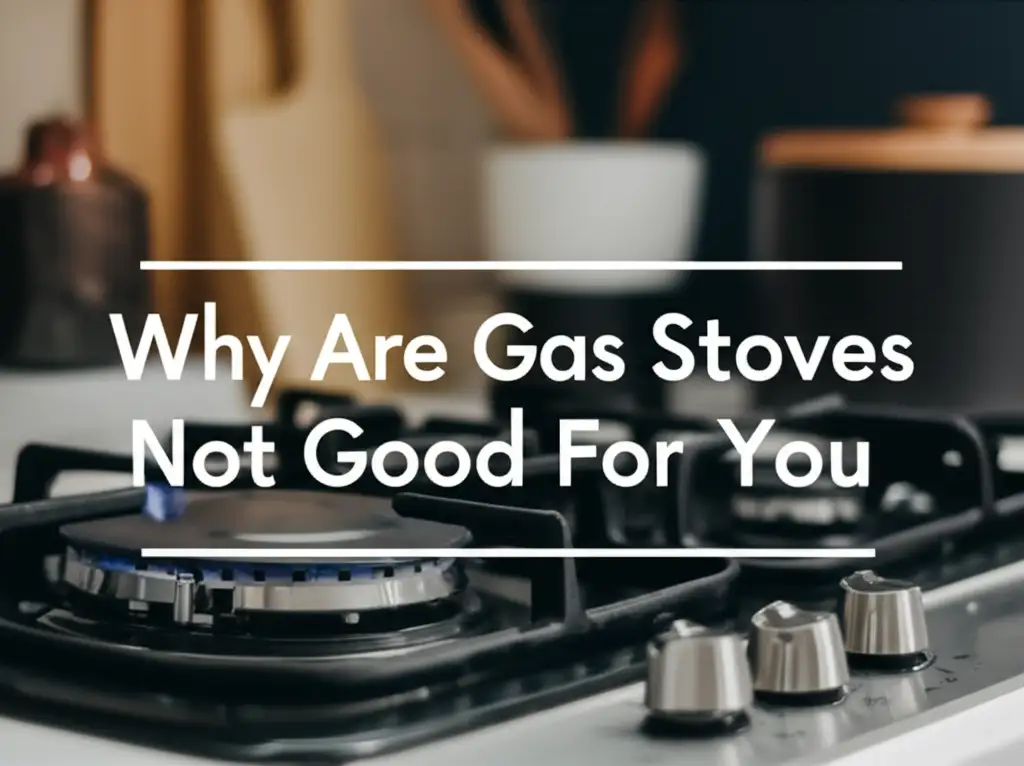· Todd Martin · Home Air Quality · 17 min read
How Do Gas Stoves Produce Nitrogen Dioxide

Gas Stoves & Nitrogen Dioxide: Understanding Emissions
Imagine a cozy evening, the aroma of a home-cooked meal filling your kitchen. For many, a gas stove makes this picture complete. We use them daily, relying on their instant heat and precise temperature control. Yet, something invisible also comes from these appliances. Gas stoves produce nitrogen dioxide (NO2), an indoor air pollutant. This gas forms during the combustion process. It impacts your home’s air quality.
Understanding how gas stoves produce nitrogen dioxide is crucial for every homeowner. This article will explore the chemistry behind NO2 formation. We will discuss factors influencing its release. We will also cover the potential health effects of exposure. Most importantly, we will provide practical steps to reduce NO2 levels in your kitchen. My goal is to help you create a safer home environment.
Takeaway
- Gas stoves produce nitrogen dioxide when natural gas burns at high temperatures, causing atmospheric nitrogen and oxygen to combine.
- NO2 is a respiratory irritant, posing risks especially to children, the elderly, and those with existing lung conditions.
- Proper ventilation, regular stove maintenance, and efficient cooking practices significantly reduce indoor NO2 levels.
- Consider using range hoods, opening windows, and exploring alternative cooking methods to minimize exposure.
How Do Gas Stoves Produce Nitrogen Dioxide?
Gas stoves produce nitrogen dioxide (NO2) primarily through a process called thermal NOx formation. This happens when the high temperatures of the gas flame cause nitrogen and oxygen gases, naturally present in the air, to combine and form nitrogen oxides, including NO2. It is not from the natural gas itself, but from the surrounding air.
The Chemistry of Gas Stove Combustion
When you turn on your gas stove, a flame ignites. This flame is the result of burning natural gas, usually methane, with oxygen from the air. This chemical reaction is called combustion. It provides the heat for cooking.
What is Natural Gas?
Natural gas is a fossil fuel. It consists mainly of methane (CH4). Methane is a simple hydrocarbon. It burns cleanly under ideal conditions. When methane burns, it combines with oxygen (O2) from the air. This reaction produces carbon dioxide (CO2) and water vapor (H2O). This is the desired outcome of efficient combustion.
The Ideal Burn
An ideal burn means complete combustion. In this perfect scenario, methane reacts fully with enough oxygen. The chemical equation for ideal combustion looks like this:
CH4 (methane) + 2O2 (oxygen) → CO2 (carbon dioxide) + 2H2O (water vapor)
When this happens, you get energy as heat. You also get carbon dioxide and water vapor as byproducts. These byproducts are generally less harmful in small amounts compared to other potential emissions. However, ideal combustion rarely happens perfectly in real-world settings. Many factors can influence the efficiency of the burn.
Byproducts of Incomplete Combustion
Sometimes, a gas stove does not have enough oxygen for a complete burn. This leads to incomplete combustion. Incomplete combustion produces different byproducts. One common byproduct is carbon monoxide (CO). Carbon monoxide is a highly toxic gas. It is colorless and odorless. It can be very dangerous in poorly ventilated spaces.
Another byproduct can be particulate matter. These are tiny solid particles. They can become airborne. Nitrogen oxides (NOx) are also formed during combustion, but through a different mechanism involving atmospheric nitrogen, not the fuel itself. Understanding these differences helps explain why various pollutants exist. You can learn more about specific emissions in articles like Why Don’t Gas Stoves Produce Carbon Monoxide. The formation of these gases depends on temperature and air availability.
How High Heat Creates Nitrogen Dioxide
The formation of nitrogen dioxide (NO2) from gas stoves is a specific process. It does not involve the methane fuel itself reacting with nitrogen. Instead, it involves the nitrogen and oxygen present in the air we breathe. This process requires very high temperatures. Gas stove flames burn at extremely hot temperatures.
Atmospheric Nitrogen’s Role
Our atmosphere is mostly nitrogen gas (N2), about 78%. It is also about 21% oxygen (O2). Under normal conditions, nitrogen and oxygen gases are very stable. They do not react with each other. This stability is important for life on Earth. However, when temperatures become very high, this stability breaks down. The energy from intense heat makes these gases reactive.
Thermal NOx Formation
When a gas stove flame reaches thousands of degrees Fahrenheit, it creates an environment of extreme heat. In this hot zone, the strong bonds between nitrogen atoms (N2) break apart. The same happens for oxygen atoms (O2). Once separated, these highly reactive single nitrogen and oxygen atoms combine in new ways. They form various nitrogen oxides, collectively known as NOx.
Nitrogen oxides include nitric oxide (NO) and nitrogen dioxide (NO2). The primary nitrogen oxide formed directly at the high temperature of combustion is typically nitric oxide (NO). However, as NO cools down and mixes with more oxygen in the air, it readily oxidizes further to form nitrogen dioxide (NO2). This chemical reaction often happens quickly, right after the gases leave the flame. This process is called “thermal NOx” formation because heat drives the reaction.
The Conversion to NO2
The conversion of nitric oxide (NO) to nitrogen dioxide (NO2) happens continuously. When NO leaves the hot flame, it enters the cooler ambient air of the kitchen. Here, there is plenty of oxygen. The NO molecules react with this additional oxygen. This reaction produces nitrogen dioxide. NO2 is the more concerning pollutant for indoor air quality. It is more reactive and harmful to human health. Thus, while the flame produces NO, the surrounding air quickly converts it to NO2.
The amount of NO2 produced depends on several factors. These factors include the flame temperature, the amount of oxygen available, and the duration of the burning process. Larger flames and longer cooking times generally mean more NO2 emissions. This chemical reaction is unavoidable with high-temperature combustion in air.
Factors Influencing Gas Stove NO2 Emissions
Many elements affect how much nitrogen dioxide a gas stove releases. Understanding these factors helps homeowners manage indoor air quality. It is not just about having a gas stove; it is about how you use it and how your home is designed.
Burner Type and Efficiency
Different gas stove burners have varying designs. Some burners are more efficient than others. An efficient burner promotes more complete combustion. It maintains a stable flame. Older stoves or those with clogged burner ports might burn less efficiently. This can lead to slightly lower flame temperatures or inconsistent burning, sometimes affecting NOx formation. However, NO2 formation is primarily a function of high heat, so all gas stoves produce it. Inefficient burning can also lead to other harmful emissions like carbon monoxide. Regular cleaning of burner caps and ports helps maintain efficiency.
Kitchen Ventilation
Ventilation is perhaps the most critical factor in managing NO2 exposure. A good ventilation system removes pollutants from the air. A range hood vented to the outdoors is ideal. It pulls cooking fumes and combustion byproducts directly out of the kitchen. Without proper ventilation, NO2 builds up rapidly in the indoor air. The size and power of your range hood matter. How often you use it and at what setting also matter. Simply opening a window helps, but a dedicated exhaust fan is far more effective.
Stove Age and Maintenance
The age of your gas stove can play a role. Older stoves might have worn parts. They might not burn as cleanly as newer models. Regular maintenance ensures optimal performance. This includes cleaning burners and checking for proper flame color. A blue flame indicates efficient burning. A yellow or orange flame suggests incomplete combustion. While incomplete combustion primarily relates to carbon monoxide, it can indicate general efficiency issues. Well-maintained stoves operate more predictably. They manage emissions better than neglected ones. Ensuring your stove is in good working order is a simple step to improve home safety. You can find tips for general maintenance in guides like How to Keep Gas Stove Top Clean.
Cooking Practices
How you cook influences NO2 levels. Longer cooking times or cooking at high heat settings produce more NO2. For instance, boiling water for a long time will release more NO2 than a quick stir-fry. Using multiple burners simultaneously also increases emissions. The type of cookware can also have a minor effect. Using lids on pots can reduce cooking time. This helps lower overall exposure. Being mindful of these practices allows for smarter cooking habits. It contributes to better air quality. The broader environmental implications of gas stove use are also worth considering, as discussed in articles like How Does the Use of Gas Stoves Affect Climate Change Is It Negative Or Positive.
Health Effects of Nitrogen Dioxide Exposure
Exposure to nitrogen dioxide (NO2) from gas stoves can have significant impacts on human health. While NO2 is an outdoor air pollutant from vehicle exhaust, indoor sources like gas stoves can lead to higher localized concentrations. These indoor levels often exceed outdoor air quality standards. This makes indoor NO2 a concern.
Respiratory System Impact
The respiratory system is the primary target of NO2 exposure. When inhaled, NO2 is an irritant. It can inflame the lining of the airways. This inflammation can cause several symptoms.
- Short-term exposure: Even brief exposure can lead to immediate effects. People may experience coughing, wheezing, and shortness of breath. For those with asthma, NO2 can trigger asthma attacks. It can also make existing respiratory conditions worse.
- Long-term exposure: Chronic exposure to NO2 can have more serious consequences. It has been linked to increased risk of respiratory infections, especially in children. It can also lead to reduced lung function over time. Some studies suggest it contributes to the development of asthma in children who live in homes with gas stoves. The damage can be cumulative.
Vulnerable Populations
Certain groups of people are more sensitive to NO2 exposure. They face higher health risks.
- Children: Children’s lungs are still developing. They breathe more air per pound of body weight than adults. This makes them particularly vulnerable to NO2. Exposure can lead to more frequent respiratory infections, like bronchitis. It can also contribute to the onset of asthma.
- Elderly individuals: Older adults often have weakened immune systems. They may have pre-existing lung or heart conditions. This makes them more susceptible to the harmful effects of NO2.
- People with existing respiratory conditions: Individuals with asthma, chronic obstructive pulmonary disease (COPD), or other lung diseases are at increased risk. NO2 can exacerbate their symptoms. It can lead to more frequent and severe episodes.
- Individuals with cardiovascular disease: Some research suggests a link between NO2 exposure and cardiovascular problems, although respiratory impacts are more commonly cited.
Long-Term Concerns
Beyond immediate symptoms, long-term exposure to nitrogen dioxide raises broader health concerns. Repeated irritation and inflammation of the airways can lead to structural changes in the lungs over time. This contributes to chronic respiratory problems. While research is ongoing, the evidence strongly suggests that indoor NO2 from gas stoves contributes to a range of negative health outcomes. This is a key reason why many health organizations advise caution regarding gas stove use without proper ventilation. These health implications are a major reason Why Are Gas Stoves Not Good For You from an air quality perspective. Protecting indoor air quality directly protects the health of household members.
Reducing NO2 Exposure from Gas Stoves
Minimizing your exposure to nitrogen dioxide from gas stoves is achievable. Several practical strategies can significantly improve your indoor air quality. These steps focus on ventilation, maintenance, and smart cooking habits.
Effective Ventilation Strategies
Ventilation is your primary defense against indoor air pollutants like NO2. Using proper ventilation helps remove these gases from your home.
- Use a Range Hood Vented Outdoors: This is the most effective solution. A range hood that exhausts air directly outside the house pulls pollutants away from the source. Make sure it is powerful enough for your kitchen size. Turn it on at the start of cooking and leave it running for several minutes after you finish. Many people forget to turn it on, or only use it on low settings. Always use the hood when cooking with a gas stove.
- Open Windows: If you do not have an outdoor-vented range hood, or in addition to it, open windows. Cross-ventilation is best. Open a window near the stove and another on an opposite side of the house. This creates a natural airflow that helps dissipate pollutants. Even a small opening makes a difference.
- Use Exhaust Fans: If your kitchen has a general exhaust fan not tied to the stove, use it. A bathroom fan or attic fan might also help move air. While not as direct as a range hood, any air movement that exchanges indoor air with outdoor air is beneficial.
- Consider a Portable Air Purifier: While not directly removing the source, some air purifiers with activated carbon filters can help absorb gaseous pollutants like NO2. Place it in the kitchen or nearby. This is a supplemental measure, not a replacement for source control.
Maintenance and Use Tips
Proper maintenance and thoughtful cooking practices also reduce NO2 emissions. These steps help your stove run more efficiently.
- Maintain Your Stove: Regularly clean your stove burners and range hood filters. Clogged burners can lead to less efficient combustion. Dirty range hood filters reduce airflow. A clean stove and hood work better. Check for a blue flame when your stove is on. A yellow or orange flame indicates incomplete combustion, which might also be linked to other emissions.
- Cook on Back Burners: If possible, use the back burners more often. These are usually closer to the range hood’s capture area. This makes the ventilation system more effective at capturing emissions.
- Use Lids on Pots: Putting lids on pots and pans speeds up cooking. This reduces the amount of time the burners need to be on. Less time burning means less NO2 produced.
- Avoid High Heat When Possible: If a recipe allows, use lower heat settings. This reduces flame temperature, which can lessen NO2 formation.
- Do Not Use Oven for Heating: Never use your gas oven to heat your home. This practice releases significant amounts of NO2 and other pollutants into your living space. Ovens are not designed for space heating.
Monitoring Indoor Air Quality
You can also monitor your indoor air quality. This provides real-time information.
- Invest in an Air Quality Monitor: Portable indoor air quality monitors can detect various pollutants, including NO2. These devices provide readings of pollutant levels. They can alert you when levels are high. This helps you understand when ventilation is most needed. They empower you to take immediate action.
- Be Aware of Symptoms: Pay attention to any respiratory symptoms among household members, especially after cooking. Symptoms like coughing, wheezing, or eye irritation could indicate poor indoor air quality.
By combining these strategies, you can significantly lower the concentration of nitrogen dioxide in your home. This creates a healthier environment for you and your family.
Considering Alternative Cooking Appliances
For those deeply concerned about indoor air quality, exploring alternative cooking methods offers a way to eliminate gas stove emissions entirely. While gas stoves have their advantages, modern electric alternatives provide comparable performance without the combustion byproducts.
Electric Stoves and Induction Cooktops
Electric stoves come in various forms, including traditional coil elements, smooth radiant cooktops, and induction cooktops. Each type uses electricity to generate heat.
- Electric Radiant Cooktops: These have a smooth glass-ceramic surface with heating elements underneath. They heat up quickly and are easy to clean. They do not produce combustion byproducts like NO2.
- Induction Cooktops: These are a more advanced type of electric cooktop. They use electromagnetic fields to directly heat the cookware itself. The cooktop surface remains relatively cool. Induction cooking is incredibly efficient. It offers precise temperature control and very fast heating times. Many professional chefs praise induction for its responsiveness, making it a viable alternative to gas. For more information on how electric stoves compare, you can read Can Electric Stoves Cook As Well As Gas.
Pros and Cons of Alternatives
Switching from a gas stove to an electric or induction model involves weighing various factors.
Pros of Electric/Induction Stoves:
- No Indoor Air Pollution: This is the biggest advantage for health. They do not emit nitrogen dioxide, carbon monoxide, or particulate matter into your home. This significantly improves indoor air quality.
- Energy Efficiency: Induction cooktops are particularly energy-efficient. They heat the pot directly, losing less heat to the surrounding air.
- Safety: No open flame means less risk of gas leaks or accidental fires. The surface of an induction cooktop cools quickly after use, reducing burn risks.
- Cleaning: Smooth electric and induction surfaces are much easier to clean than gas grates and burners.
Cons of Electric/Induction Stoves:
- Upfront Cost: Induction cooktops can be more expensive to purchase and install than gas or traditional electric stoves.
- Power Requirements: Some high-power electric or induction cooktops may require a dedicated 240-volt electrical circuit. This can mean additional electrical work for installation.
- Cookware Compatibility (Induction): Induction cooktops only work with magnetic cookware (cast iron, stainless steel with a magnetic base). You might need to replace some of your pots and pans.
- Cooking Feel (Perception): Some cooks prefer the visual flame of a gas stove. They believe it offers more immediate feedback, though induction offers equally precise control.
Considering an alternative appliance is a significant decision. It depends on your budget, cooking style, and priorities regarding indoor air quality. For many, the long-term health benefits of eliminating combustion emissions outweigh the initial investment or adjustment period.
Frequently Asked Questions
Do all gas stoves produce NO2?
Yes, all gas stoves produce nitrogen dioxide (NO2) when in operation. This is an inherent part of the combustion process at high temperatures. The nitrogen and oxygen in the air react to form NO2. The amount produced varies based on factors like burner size, flame temperature, and duration of use.
What are the main health effects of NO2 exposure?
The primary health effects of nitrogen dioxide exposure involve the respiratory system. Exposure can lead to irritation of the airways, coughing, wheezing, and shortness of breath. It can also trigger asthma attacks and increase the risk of respiratory infections, especially in children and individuals with existing lung conditions.
How can I test my home’s NO2 levels?
You can test your home’s NO2 levels using an indoor air quality monitor. These devices are available for purchase online or at home improvement stores. They provide real-time readings of various pollutants, including NO2. This helps you understand your home’s air quality and identify peak emission times.
Is NO2 the only harmful emission from gas stoves?
No, nitrogen dioxide is not the only harmful emission from gas stoves. Gas stoves can also produce carbon monoxide (CO), particulate matter (PM2.5), formaldehyde, and other volatile organic compounds (VOCs), especially if combustion is incomplete or ventilation is poor. All these pollutants can negatively impact indoor air quality.
How much ventilation is enough to reduce NO2?
Effective ventilation involves using a range hood that vents to the outdoors, ideally with a minimum exhaust rate of 200 cubic feet per minute (CFM) or more, depending on stove size. Turning on the range hood to a high setting at the start of cooking and leaving it on for several minutes after significantly reduces NO2 accumulation. Opening windows also helps.
Can old gas stoves produce more NO2 than new ones?
Older gas stoves might produce slightly more NO2 due to less efficient burner design or wear over time, leading to less precise flame control. However, the fundamental process of NO2 formation at high temperatures means all gas stoves produce it. Regular maintenance is crucial for both old and new stoves to ensure optimal performance and minimize emissions.
Conclusion
We have explored how gas stoves produce nitrogen dioxide. It is clear that the high temperatures of the flame cause atmospheric nitrogen and oxygen to combine, creating this indoor air pollutant. Understanding this process empowers us as homeowners. We can take steps to protect our health.
Nitrogen dioxide exposure carries significant health risks. It primarily affects the respiratory system. Children, the elderly, and those with existing lung conditions are especially vulnerable. Symptoms range from irritation and coughing to increased risk of asthma attacks and respiratory infections. Protecting your indoor air quality is vital.
Fortunately, you can take practical actions to reduce your NO2 exposure. Using a well-vented range hood is your best defense. Opening windows, maintaining your stove, and adopting smart cooking practices also make a big difference. For some, considering electric or induction alternatives might be the ultimate solution for cleaner indoor air. By being informed and proactive, you can ensure your kitchen remains a healthy and enjoyable space. Take action today to improve your home’s air quality for a healthier tomorrow.
- nitrogen dioxide
- gas stove emissions
- indoor air quality
- NOx pollution
- respiratory health
- kitchen ventilation





